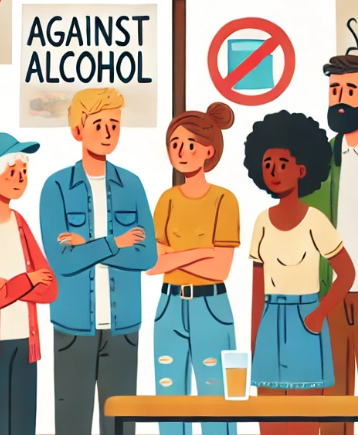
Tackling Alcohol Harms with a Community Approach
Alcohol-related harms pose a severe threat to global health, particularly among young people. The alcohol industry is increasingly targeting low- and middle-income countries (LMICs), exploiting vulnerabilities and contributing to a rise in harmful drinking patterns. While high-income countries (HICs) have made strides in reducing alcohol consumption through various interventions, LMICs face unique challenges and require tailored strategies to combat these issues. A recent study aimed to map and synthesize existing literature on community-based and intersectoral interventions to reduce alcohol harms in both HICs and LMICs, offering valuable insights for future efforts.
The Global Alcohol Crisis
Alcohol use is a major public health concern worldwide, directly impacting progress towards the Sustainable Development Goals (SDGs). It is linked to a range of health problems, including maternal and child health issues, infectious diseases like HIV and TB, non-communicable diseases, traumatic injuries, poisoning, and mental health disorders. Alcohol is also a known carcinogen and a dependence-causing psychoactive drug.
LMICs are particularly vulnerable due to intersecting inequalities, cultural dynamics, and aggressive alcohol marketing. Despite some policy measures in place, alcohol consumption and related harms continue to rise in these regions. This makes it crucial to investigate effective harm reduction measures tailored to local contexts.
Community and Intersectoral Approaches
The study reviewed 61 articles, with 53 from HICs and 8 from LMICs. It highlighted the importance of community-based and intersectoral approaches in reducing alcohol harms. Interventions in HICs often targeted adolescents and combined community action with other components such as school-based programs, policy measures, and law enforcement. In contrast, LMIC interventions were less comprehensive, lacking focus on adolescents and missing key components like policy and enforcement.
Success Factors and Challenges
Successful interventions shared several key enablers:
- Clear intervention focus and high political support.
- Local leadership and culturally appropriate plans.
- High community motivation and specific strategies for parents.
Challenges included:
- Sustainability and complexity of interventions.
- Managing participant expectations and engaging multiple sectors.
Learning from High-Income Countries
HICs have demonstrated the effectiveness of multi-component and multi-sectoral interventions. These interventions involved schools, religious organizations, sporting associations, police, public prosecution, municipalities, and alcohol-serving establishments. Educating and sensitizing the population, particularly adolescents and youth, through various channels proved effective.
Key enablers in HICs included:
- Strategies for parents to increase awareness and parenting skills.
- Clear intervention focus with high political support and local leadership.
However, long-term sustainability remains a challenge, often due to intervention fidelity and differences in structural and cultural factors between settings.
Challenges and Opportunities in LMICs
In LMICs, community engagement was central to interventions. For example, the Tailored Goal-Oriented Community Brief Intervention in Thailand significantly reduced drinking and alcohol intake through family education visits. In South Africa, community stakeholders identified problems and formulated action plans, resulting in positive outcomes and community empowerment.
Despite these successes, LMIC interventions faced challenges such as:
- Demanding implementation processes.
- Difficulty engaging non-health sectors like community safety and policing.
- Managing expectations and interpersonal dynamics within collaborations.
Promising elements of successful LMIC interventions included:
- Simplicity and cultural appropriateness.
- High participant motivation and community support.
- Collaborative community-driven engagement.
Moving Forward
The study underscores the need for more research and interventions in LMICs, particularly those targeting adolescents. It highlights the importance of community-driven action, culturally appropriate plans, and the involvement of various sectors to address alcohol harms effectively. Future efforts should focus on piloting, scaling, and sustaining these approaches while considering local contexts and capacities.
Conclusion
Addressing alcohol harm requires a comprehensive, community-based approach that engages multiple sectors and is tailored to local contexts. While HICs have made progress through multi-component interventions, LMICs face unique challenges that necessitate tailored strategies. The study provides valuable insights into what works and what doesn’t, offering a roadmap for future efforts to reduce alcohol-related harms globally.
Let us know in the comments!
- Have you or someone you know been impacted by alcohol-related harms? What community-based strategies have you seen or would like to see implemented to address this issue?
- What challenges do you think communities face in engaging multiple sectors (like health, education, and law enforcement) to reduce alcohol harms?
Empower Your Network – Subscribe and Share!
Unlock key insights with ‘This Week in Public Health.’ Subscribe for free and share to drive change as part of a dedicated community.



